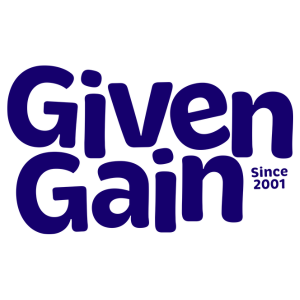Insights
INSIGHTS
All Topics
How to use AI for fundraising
As AI becomes rapidly more advanced, it’s opening up new ways of working for fundraisers – saving time, money, and human brain power
A recent Sage and Third Sector survey found that 40% of non-profits saw a drop in funding over the past 12 months. That’s alongside an increase in demand for services, with millions struggling to survive the economic pressures. Against that backdrop, fundraisers are having to work even harder to keep donations flowing in.
Using AI can help to streamline processes, better understand donors, and connect with potential supporters more efficiently. And all that both save money and help you to hit fundraising targets. Below are some ideas to make AI part of your fundraising toolkit.
Creating AI content
Needless to say, AI is able to churn out copy faster than any human writer. So when you’re creating new fundraising copy for your website or writing an email campaign, AI can be a really helpful tool.
That’s not to say it will produce the end product. While AI tools can provide readable, grammatically correct and on-topic copy, it’s best to use it to create a first draft (at least at this point in time).
You’ll need to inject your charity’s tone of voice into the copy, along with some crucial humanity. It’s also likely you’ll also want to include case studies and quotes from your own resources – it’s the personal, direct stories that will make your fundraising copy most impactful.
You might want to explore ChatGPT, copy.ai or Jasper. But be aware of any accuracy or ethical issues that could crop up from using AI generated content.
How AI helps fundraisers tell their story
Creating great fundraising content is not just about your own blogs and web pages. Your community fundraisers are also vocal advocates for your cause and might benefit from a helping hand when it comes to telling their story.
This is where AI can assist. To further help fundraisers meet their goals, the not-for-profit fundraising platform GivenGain has started integrating AI text helpers on its site. When a fundraiser creates their page, they can press a button to see suggested improvements from AI that will make the text sparkle. GivenGain’s AI will also support fundraisers creating posts on their fundraising projects, based on the charities they are fundraising for.
In fact, GivenGain’s AI is there to help new fundraisers from the very start, generating a basic unique fundraising bio for their account from the moment they sign up. Users are able to edit if necessary but by giving them this head start, GivenGain ensures fundraisers can get their fundraising journey off to a good start – no more blank fundraising pages!
Kyle Ueckermann, Head of Product at GivenGain and a panelist at our upcoming Digital Fundraising Summit event, says: “We know how important it is to equip fundraisers with the best tools possible to tell their stories. AI shouldn’t replace the human side to this, rather give them a helping hand and starting block so it’s not the same empty box staring back at them. It’s so exciting to be at the heart of this innovation, making a tangible difference to the causes they support”.
With the help of AI, fundraisers can get the ball rolling towards their fundraising quickly and simply, with little fuss. And it’s worth it too – research from the TCS London Marathon has shown that those who start fundraising early are likely to raise up to £700 more on average than those who start fundraising two months before the day of the race.
You can sign up to attend the Future of Fundraising panel at the Digital Fundraising Summit here.
How using AI chatbots raises funds
Chatbots are available 24/7 – ready and waiting to answer questions from potential donors. That makes them a responsive and effective way to answer potential donors’ most common questions, or direct them to the relevant information on your website. Those questions might be ‘what’s the easiest way to donate?’, ‘what payment methods do you take?’ or ‘how will you use my donation?’.
Using a chatbot makes this information instantly accessible for potential donors, without them having to wade through a website. Chatbots can also be integrated with payment software, like PayPal, so you’re less likely to lose donors along their journey. And there are ways to make your chatbot sound more human and in line with your tone of voice.
WaterAid took their use of a chatbot a step further, with their ‘talk to Sellu’ chatbot showing how AI can be used creatively. It gave potential donors the opportunity to ‘walk’ around Tombohuaun, Sierra Leone and see how donations would benefit the village. The campaign raised £8.2 million, with 76% of donations made after just one visit to the Untapped website.
How to use AI for predictive analytics and donor segmentation
AI algorithms can analyse huge amounts of data, fast. This can help you to better understand your donors: how they’ve given to you in the past, who’s most likely to donate again, and the most effective ways to approach them.
It’s a powerful and efficient way to help create targeted and effective fundraising appeals. One example, is Parkinson’s UK’s use of predictive modelling. They worked with data consultancy, Wood for Trees, who helped boost their cash giving by almost £500,000.
AI tools can also be used to create segmented groups of donors who have similar characteristics – that might be age, location or donation preferences. While this could be done without AI, it makes the process faster, more efficient and more affordable.
How to find inspiration with AI
If you’re stuck for words, AI tools like ChatGPT can help to kick-start the creative process. That might mean asking it to suggest subject headers for a new fundraising campaign, or finding new ways to say thank you to donors. Even if you don’t use any of its suggestions, it can help to bring a new perspective or direction to your thinking.
Or try out some AI image generation tools, such as the much-hyped Midjourney or the free TinyWow.
Using AI generated images can bring up the messy issues of ethics and plagiarism (as this Toronto charity found when it used them in a campaign). So while you might not want to use them externally at this point, they can be helpful in sparking new ideas or as reference points for designers or illustrators.
How to use AI to automate fundraising processes
Letting AI take care of routine and repetitive tasks can make them more efficient, saving you time and money. Those tasks might include processing donations, maintaining donor information, scheduling regular comms, or analysing social media to identify potential donors.
Automating the most time-consuming fundraising processes means you’ll be able to spend more time on those areas that need a human input – like nurturing genuine donor relationships or coming up with creative new campaigns.
Mary Wessel
More on this topic
Recommended Products
Recommended Products
Related Videos
Our Events
Charity Digital Academy
Our courses aim, in just three hours, to enhance soft skills and hard skills, boost your knowledge of finance and artificial intelligence, and supercharge your digital capabilities. Check out some of the incredible options by clicking here.
























